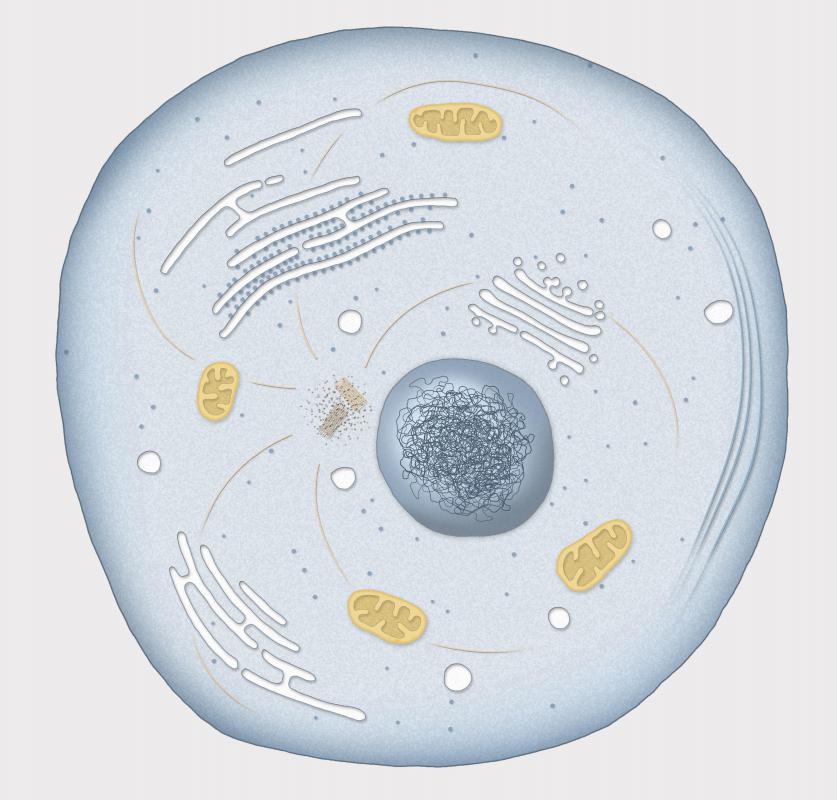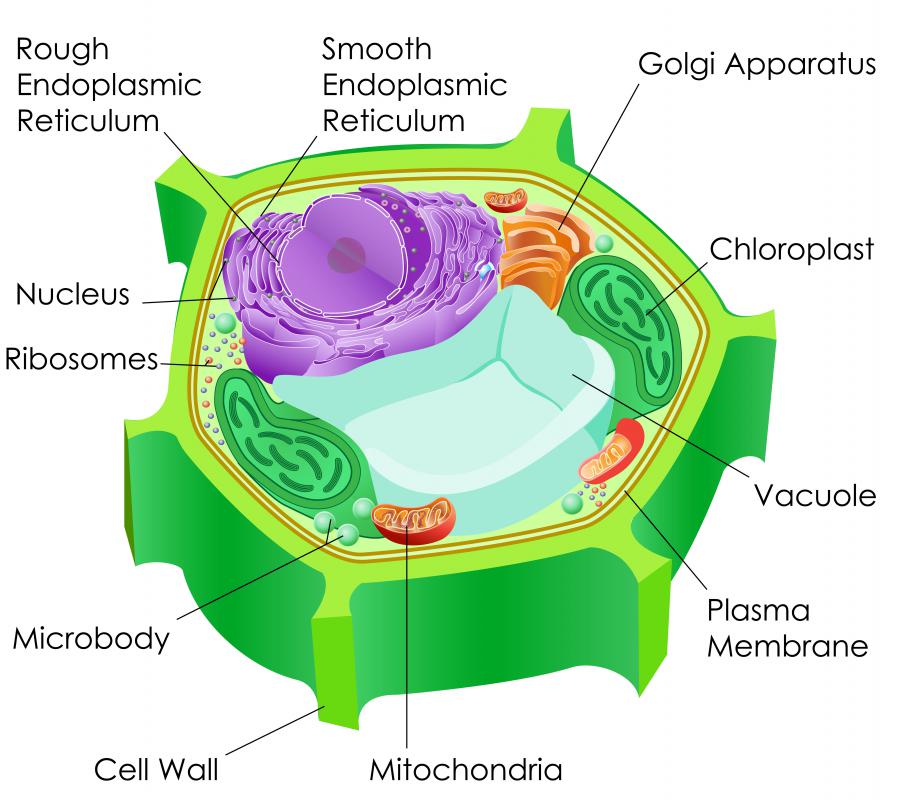At WiseGEEK, we're committed to delivering accurate, trustworthy information. Our expert-authored content is rigorously fact-checked and sourced from credible authorities. Discover how we uphold the highest standards in providing you with reliable knowledge.
What Is the Function of the Cell Membrane?
The primary function of the cell membrane is to encapsulate the cell’s contents. It contains all of a cell’s structures within it. Its secondary functions include regulating what molecules and substances can enter and exit the cell and its water balance. Its basic functions are similar to that of a medieval town wall surrounding a city.
Prokaryotic and eukaryotic cells have small differences in their membrane structures, but the function of the cell membrane does not change. The basic membrane structure, or plasma, is made up of proteins and lipids. The membrane is essentially two layers of phospholipids put back to back so their tails mesh together. The inner and outer surfaces of the membrane are mostly made up of phospholipid heads. The surfaces are punctuated on occasion by protein-forming channels or trans-membrane proteins and peripheral proteins.

The first function of the cell membrane is to contain the cytoplasm. This includes the liquid cytosol, the nucleic material such as the deoxyribonucleic acid (DNA) and any organelles such as the mitochondria. It also anchors the cell to the cell wall and to surrounding tissues to give the cell shape.
There are five ways molecules and substances can enter or leave the cell as it performs the central function of the cell membrane. Three of these means are passive and two are active. The passive means of transportation are lipid diffusion, osmosis and passive transport. The two active means are active transport and vesicles.
Lipid diffusion occurs when a certain type of lipid encounters the cell membrane. Lipid-soluble molecules such as steroids are able to diffuse through the membrane. In these instances, it is as if the membrane does not exist.

The function of the cell membrane almost does not exist during osmosis as well. Osmosis is the movement of water in and out of a cell. This water movement happens naturally to try and balance the solution concentration of the water. If there are too many solutes such as proteins in a solution, water from a less concentrated area will move naturally into the densely-concentrated solution.

Passive transport and active transport rely upon proteins in the lipid membrane. During passive transport, certain molecules can diffuse through the trans-membrane proteins without activation or invitation. When the cell requires certain molecules to be brought into the cell, then active transport uses a protein pump molecule and enzyme.
A vesicle is another way of bringing specific molecules into the cell, but without using a protein to do it. The molecule attaches itself to the cell membrane and then the membrane encloses itself around the molecule. This enclosed molecule is called a vesicle. The vesicle detaches itself from the membrane so that it is inside the cell, where it digests the molecule and releases its components into the cytoplasm.
AS FEATURED ON:
AS FEATURED ON:















Discuss this Article
Post your comments